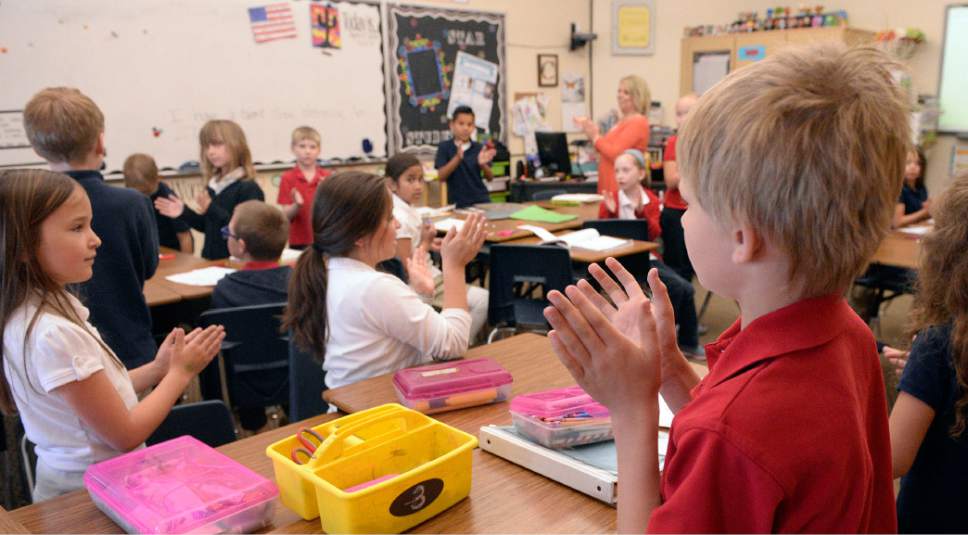This is an archived article that was published on sltrib.com in 2016, and information in the article may be outdated. It is provided only for personal research purposes and may not be reprinted.
Is enrollment at Utah's charter schools nearing a saturation point?
The alternative public schools welcomed roughly 4,000 additional students in 2016, according to new data from the Utah Board of Education, for a growth rate of 5.9 percent. It's enough to outpace the state as a whole, but also the second consecutive year for slowing growth among charters.
In 2014, charter enrollment increased by 12 percent, followed by 9.8 percent in 2015.
Mark Peterson, spokesman for the office of the state school board, said it's not yet clear whether Utah's charter schools face an enrollment plateau.
"I don't know where that level is, where everybody who wants to be at a charter schools is in one," he said.
Overall, Utah's public schools grew by 10,580 students, or 1.67 percent, based on an annual head count taken Oct. 1. That growth translates into a total of 644,476 students within the state's public education system.
Statewide growth last topped 2 percent in 2012, and it has ebbed and flowed between 1 percent and 2 percent since, the data show.
"It's lower than it has been," Peterson said of this year's growth rate, "but it's not dramatically lower."
The 2008 financial crises affected enrollment growth, Peterson said, as the state's and nation's birthrates declined during the Great Recession.
This year's kindergarten students were born in 2010, he said, which likely makes them the last cohort of "recession babies."
"We didn't get quite the jump that we normally have for kindergartners," he said. "We should start seeing a rebound in those numbers."
Charter schools enroll 11 percent of Utah's total student body, or slightly more than one out of every 10 public school students in the state.
Several new charters opened this year while others have closed. And Peterson said the State Charter School Board is less likely to approve new schools than it has been in the past.
"They are saying 'no' more often than they used to," he said. "[Enrollment] may be leveling off, but we're also adding fewer charter spots."
Royce Van Tassell, executive director of the Utah Association of Public Charter Schools, said the dip in new schools reflects the relatively stagnant growth in the state as a whole.
And it's difficult to quantify Utah's unmet charter need, he said, because of the overlap of enrollment waiting lists.
"One student may be hoping to win the lottery at three or four different schools," he said.
But he added that there is a clear demand for educational options within the state.
"We have thousands, if not tens of thousands, of students who are hoping to attend one of Utah's growing number of charter schools," Van Tassell said.
Among Utah's 41 school districts, Alpine continues to be the largest in the state, with 77,343 students, according to the data, while Daggett is the smallest, with 183.
The Utah Board of Education is expected to release demographic data for the 2016 student body later this week.
Twitter: @bjaminwood Statewide public school enrollment and growth rate
2012 • 600,970; 2.25 percent
2013 • 612,551; 1.93 percent
2014 • 622,182; 1.57 percent
2015 • 633,896; 1.88 percent
2016 • 644,476; 1.67 percent
Charter school enrollment and growth rate
2012 • 50,786; 13.13 percent
2013 • 54,900; 8.10 percent
2014 • 61,464; 11.96 percent
2015 • 67,509; 9.84 percent
2016 • 71,494; 5.90 percent
Source: Utah Board of Education



